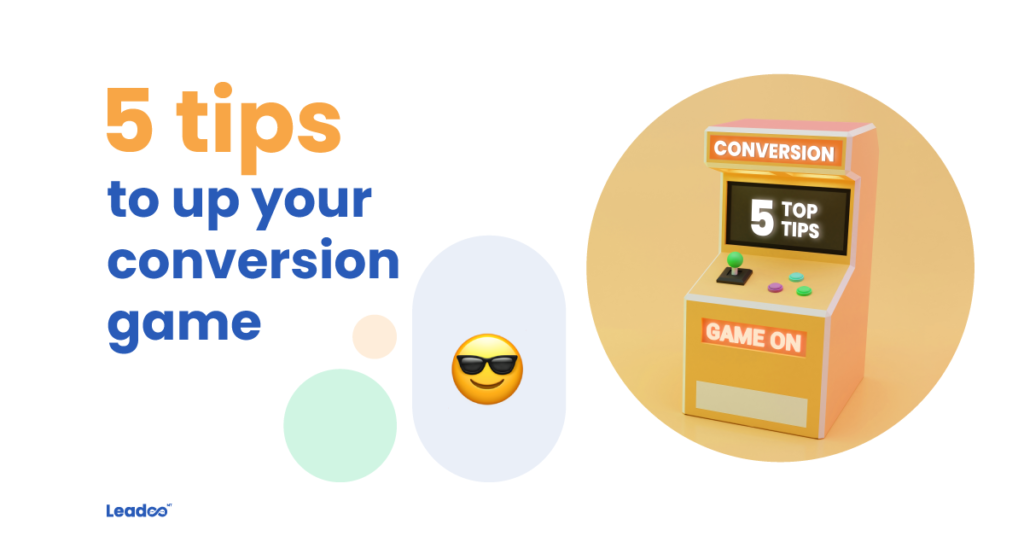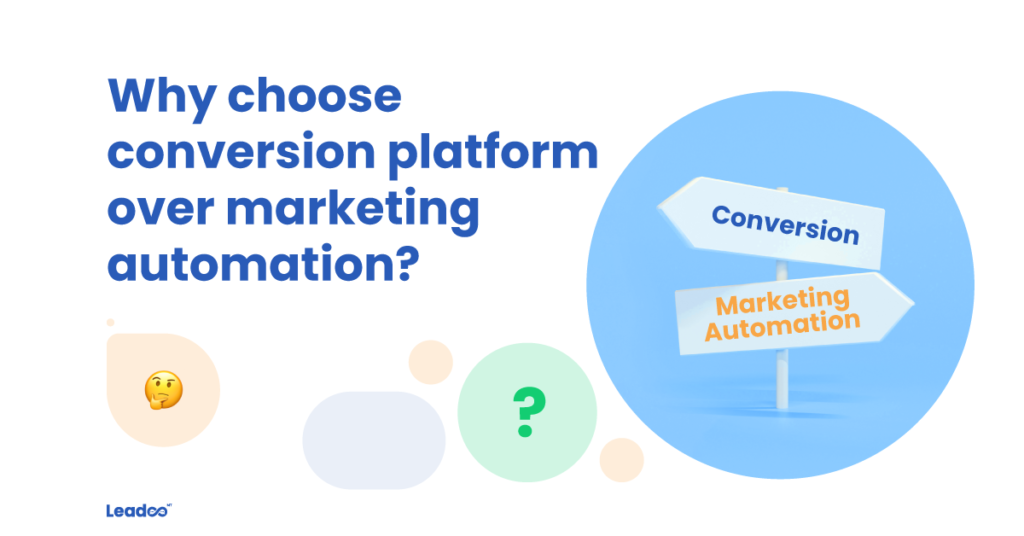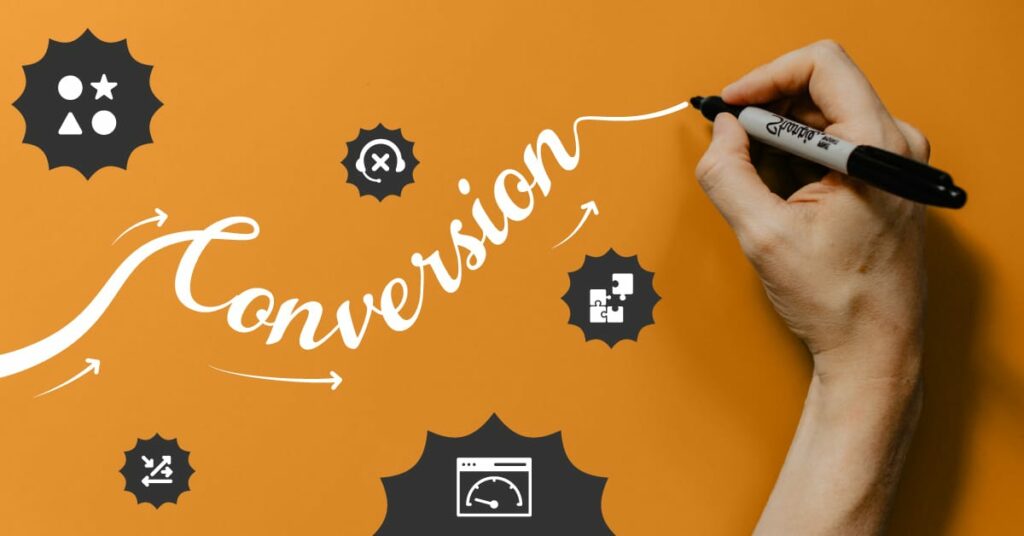The debate rages on; Inbound vs Outbound marketing, which is king? The traditional marketers toss their hat into the ring; outbound is better – you need to convince those customers to come your way. Without outbound, there is no inbound! Those who focus on the latest trends spit back; we can draw them in with our dashing good-looks and our interactive, whizzy site and content. The debate continues whilst customers go elsewhere, where their needs are met by both of those things.
That’s because, in an ideal world, you need a healthy mix of inbound and outbound marketing. Those things are part of the means to an end. And that end should be conversion. Not convinced? Let us show you why.
Here are 6 simple reasons why you should focus on conversion over inbound/outbound.
1. A focus on conversions helps your bottom line improve
Not the Kim Kardashian kind, but rather the kind that helps your pocket. And that’s what we all care about most. In order to increase your sales, you need your sales teams to have a constant flow of quality leads that they can then wave their magic wands at. The formula to make this happen is a simple one; more conversions through your site means more leads for the wizards in your sales team. More leads means more potential sales and – you got it – profit.
More profit means you can definitely afford that all inclusive to Marbella and spend 2 weeks in the Spanish sun armed with nothing but a Woo Woo. Woo hoo.
But, there are some cost savings to consider here too – increasing traffic (especially when your acquisition rates are decent) as a strategy to boost sales can be costly in marketing campaigns and planning. Having a decent conversion strategy can be as simple as optimising your call to actions, and this is definitely worth trying before investing in an expensive campaign to drive traffic.
2. Conversion rates act as an early warning system
But not for earthquakes or tsunamis. Instead, if you consider your conversion rate at differing stages of the customer journey, you can easily identify pinch points where customers end their engagement with you. This means you can take action to prevent this happening with visitors to your page in the future by altering the experience the customer has when they interact with your site.
It could be that your content doesn’t communicate your product or unique selling proposition, so customers don’t realise you can fulfil their needs. It could be that your site isn’t optimised for the platform they’re using (more on that later). Or, it could be that customers hit your landing page, love your product and then click through to fill out a contact form and BAM – a survey longer than the 2021 census. Ain’t nobody got time for that.Fortunately, you’ve got a pal who knows a bit about that. Us. We’re your conversion rate guru pal.
We had a chat with one of our clients, Speed Screed Ltd., where we talked all things conversion, as well as a look into how we’ve managed to help increase their conversion rate by giving them better oversight of the customer journey as a whole.
3. Conversions provide an important performance indicator
Conversion rates should be one of your top KPIs, as it allows you to measure the success of your marketing campaigns. Using conversion rates alongside click through rates, bounce rates and by looking at the quality of leads, you can determine how successful a campaign has been.
If your campaign has a high conversion rate, but is producing poor quality leads, this can tell you that the wrong type of customer is coming through. This could mean you’re targeting the wrong types of businesses with your content and messaging. You should probably take a big swig of coffee and go fix that.
4. Conversion monitoring allows prioritisation of preferred channels
If you compare your conversion rate across all your channels, it allows you to identify where most of your conversions happen. If you compare them and you can see that more of your quality leads are accessing your business through your mobile site, then you should do two things;
- Check your other platforms to see if there is something preventing potential leads from converting that’s pushing your mobile traffic. See point 2 (early warning system) above.
- Give yourself a pat on the back that your conversion strategy on mobile is effective. More of that on your other channels, please!
If the majority of your conversions are coming from mobile, this also allows you to focus on optimising for that channel, helping you to keep pushing that conversion rate up and working for your SEO ranking at the same time.
5. Conversion lets us measure the success of targeting
If leads are converting through initial contact (i.e. becoming Marketing Qualified Leads, or MQLs) but then are failing to become Sales Qualified Leads (SQLs), this tells you an important story. It means customers are engaging initially, which is great. But then they disappear into the ether like your MySpace photos from 2007 and you’re back to square one. This could be because you’re targeting the wrong segment.
For example, if your target market is businesses with a turnover of £250k a year or more but you’re getting small businesses through on the lead gen forms, this shows you that your content is targeting the wrong group. A re-evaluation of content strategy is needed to address the problem here. The beauty of using conversion rates as a measure means you can A/B test your messaging to see what improves your rates.
Similarly, if you can see that customers are landing on a pricing page, for example, this could also indicate that your targeting is mismatched. You may need to change your pricing strategy, for example by providing a pay-per-month option or changing subscription options to provide flexibility for your customers and to see what works best for them. Two birds with one stone. Bonus.
6. Ensures you’re competing for your space
If leads are converting through initial contact (i.e. becoming Marketing Qualified Leads, or MQLs) but then are failing to become Sales Qualified Leads (SQLs), this tells you an important story. It means customers are engaging initially, which is great. But then they disappear into the ether like your MySpace photos from 2007 and you’re back to square one. This could be because you’re targeting the wrong segment.
For example, if your target market is businesses with a turnover of £250k a year or more but you’re getting small businesses through on the lead gen forms, this shows you that your content is targeting the wrong group. A re-evaluation of content strategy is needed to address the problem here. The beauty of using conversion rates as a measure means you can A/B test your messaging to see what improves your rates.
Similarly, if you can see that customers are landing on a pricing page, for example, this could also indicate that your targeting is mismatched. You may need to change your pricing strategy, for example by providing a pay-per-month option or changing subscription options to provide flexibility for your customers and to see what works best for them. Two birds with one stone. Bonus.
Key takeaway
Conversion rates are a really important number to keep your eye on, now more than ever before. They give you really important insights into lots of areas and for this reason, they’re more important to focus on than just inbound or outbound marketing.
If we’ve successfully convinced you, you’re hopefully wondering how you can boost your conversion rate outside of the ideas touched on above. Chatbots are an alternative option to traditional conversion methods such as contact forms. You can find industry-specific chatbot conversion rate benchmarks in this report.
Fun Fact to Finish:
We love data. And when we looked at the data for 400 companies in 25 different industries, we found that 10-30% of chatbot conversations through Leadoo bots result in a qualified lead or conversion. And if that’s not a good enough reason to consider chatbots to help boost your conversion rate, we don’t know what is.


